Chorley artist whose late grandfather left her his paintings is helping endangered wildlife one sketch at a time
and live on Freeview channel 276
Rebecca Findlay, 40, from Eaves Green, whose late artist grandfather Archie Findlay, 74, left her his oil paintings, creates nature-based portraits in a bid to help endangered wildlife from becoming extinct.
Whether mixing colours together or drawing and with the help of her late grandfather's old painting bag, her work centres around life, its fragility and beauty.
Advertisement
Hide AdAdvertisement
Hide AdMaking her dedication to the cause even more impressive, Rebecca suffers from dyspraxia - a common disorder that affects movement and co-ordination.
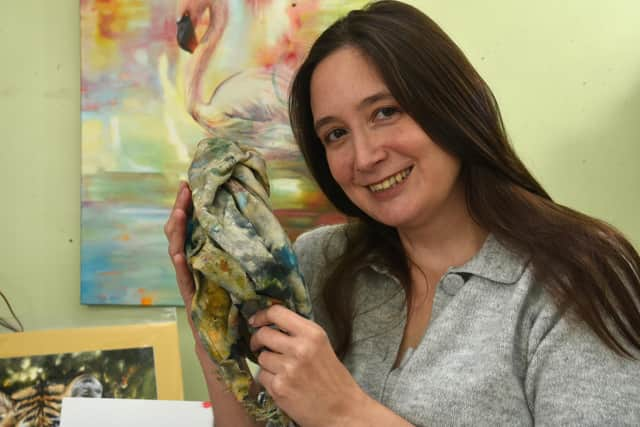

She said: "I often struggle with verbal communication due in part to having dyspraxia and one of the reasons why I think I'm drawn to painting animals is that they communicate so much to us without speaking.
"It is very special to be able to capture something of that expression in a painting.
"I have always made art, but started my art business last year after applying for funding through the New Enterprise Scheme via the Jobcentre.
Advertisement
Hide AdAdvertisement
Hide Ad"After I separated from my husband I came back to Chorley with our two children Archie, four, and Zachary, eight, from Saudi Arabia where I had worked as a health care assistant.
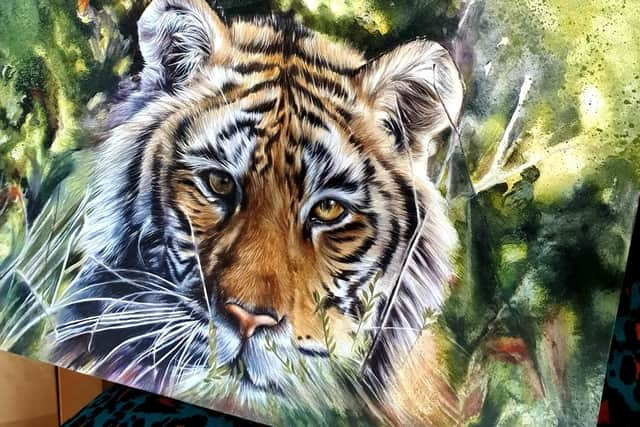

"I then found myself with no job so I had the idea of doing pet portraits which were selling amongst family and friends initially and then I started branching out into making wildlife art and sold a couple prints internationally.
"People who were not my family and friends also seemed to be interested in what I was doing and some wanted commissions making or bought prints.
"I also plucked up the courage to enter into an international art wildlife competition, Artists for Painted Dogs and Other Wildlife, and had work selected for that which was a massive confidence boost.
Advertisement
Hide AdAdvertisement
Hide Ad"All the images I use as starting points are either from my own or customer photos. I also use some public domain free for commercial use images and some paid for royalty free images from wildlife photographers which I then transcribe and transform."
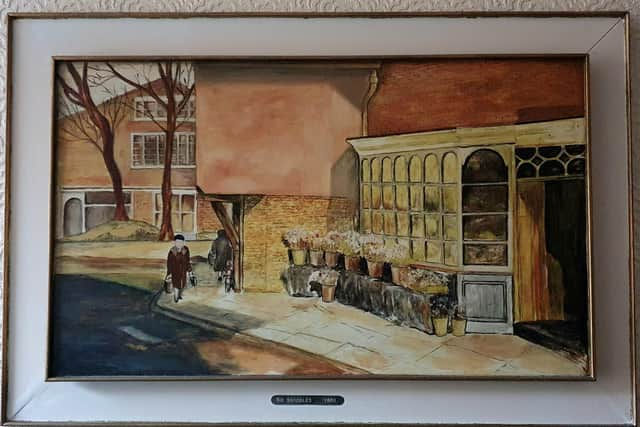

How did Rebecca get into art?
She has many years of experience in painting and drawing as she has been making artwork since she was a little girl, deriving inspiration from her grandfather who, as well as being a coach builder was a talented artist who nurtured her interest.
She also trained in Blackburn and then in Kingston Upon Thames, with her artwork being sold both internationally and here in the UK.
Although her art has a strong basis in realism, Rebecca often uses intuitive means and techniques which has garnered the attention of oversea buyers including collectors in America and Turkey.
Advertisement
Hide AdAdvertisement
Hide Ad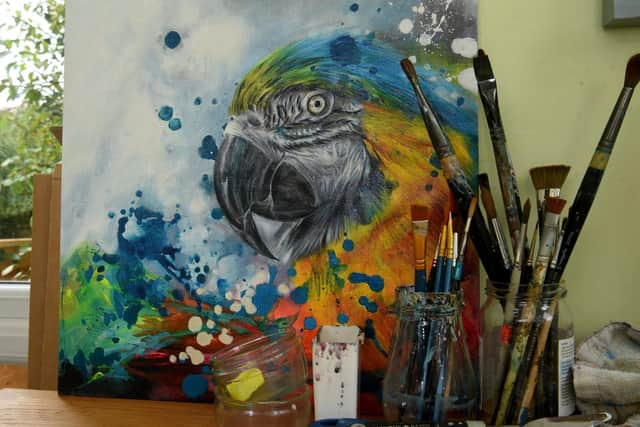

More recently, she has been specialising in wildlife art and pet portraiture combining her love of animals and nature with her love of art.
On average to sketch, colour and perfect an animal, it takes her around 30/40 hours over a week.
She added: "I entered a Sketch for Survival art competition which helps endangered species and was humbled to learn that I was one of just 100 finalists.
"I used a picture of a tiger in the wildlife category which I entitled 'Vulnerability in Strength'.
Advertisement
Hide AdAdvertisement
Hide Ad"I had actually intended to enter another work of the same subject called 'A New Strength', but this sold so I had around two weeks to create another.
"It came from the idea that we often perceive the tiger as a symbol of strength but the fact is that this has actually contributed to their endangered status on the IUCN Red List of Threatened Species.
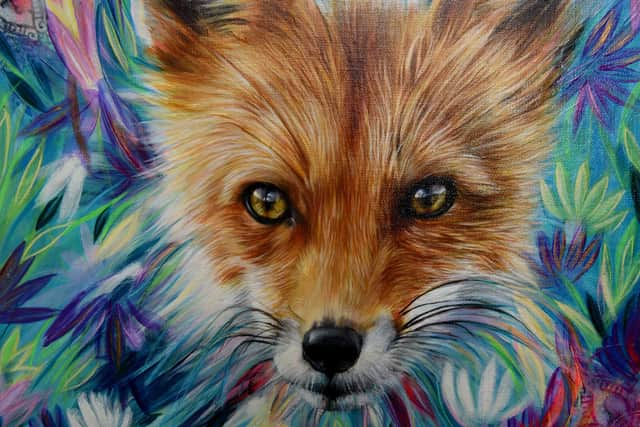

"As well as obviously referring to the tiger's endangered status and vulnerability in the wild, it also felt poignant to me following my separation from my husband and being a single parent.
"This also enables me to connect to the subject/image on a deeper level. Sometimes there is also a personal and collective story behind each artwork too that is not always obvious but I usually reflect this in the titles of the works.
Advertisement
Hide AdAdvertisement
Hide Ad"Along the way I met some amazing artists who were also passionate about animals and in particular, animal conservation.
"One of the realisations for me was that I could actually use my art as a force for good - to help raise awareness and money for species and spaces that are endangered. It was like my art suddenly had a place and a direction rather than simply being something beautiful to look at it could do much more.
"I took part in a couple of fundraisers, notably one which aimed to raise money for the Rhino population to help the rangers in their fight against poachers at a park in South Africa."
What other artists inspire her?
"Quite different from my own work, but I love the artist Joan Eardley's work for its rawness and humanity.
Advertisement
Hide AdAdvertisement
Hide Ad"That humanity is something that I strive to express in my own work and, although my works have their basis in realism, I often use techniques that go beyond using a paintbrush but incorporate more intuitive drips and splashes and finger painting.
"Contemporary artists that I admire include wildlife artists like David Stribbling, Emma Swift and Daniel Cole and the figurative painter Rosso Emerald Crimson."
She said: "My hope for the future is that I can continue to build upon what I've started and be in a stronger position to be able to more regularly support some of the causes that have come to my attention.
"I am really pleased from where I have got to. I use mostly acrylics and water based paints as they don't make as much of a mess.
"I hope to branch out and get my own studio.
Advertisement
Hide AdAdvertisement
Hide Ad"Sometimes with art you can feel like there is no real purpose even though you are creating a beautiful piece of work.
"I am always thinking what more can I do? It's nice to know art can have purpose to it by helping endangered species."
She has entered the competition for Painted Dogs and Other Wildlife again this year, submitting an African wild dog as they are called "painted dogs and have the look of a hyena to them".
People can vote for her Sketch for Survival tiger entry which will be exhibited at the Oxo gallery in London next month and then sold via an online auction HERE.
To find out and view more of Rebecca's collage of work CLICK HERE.
Comment Guidelines
National World encourages reader discussion on our stories. User feedback, insights and back-and-forth exchanges add a rich layer of context to reporting. Please review our Community Guidelines before commenting.
